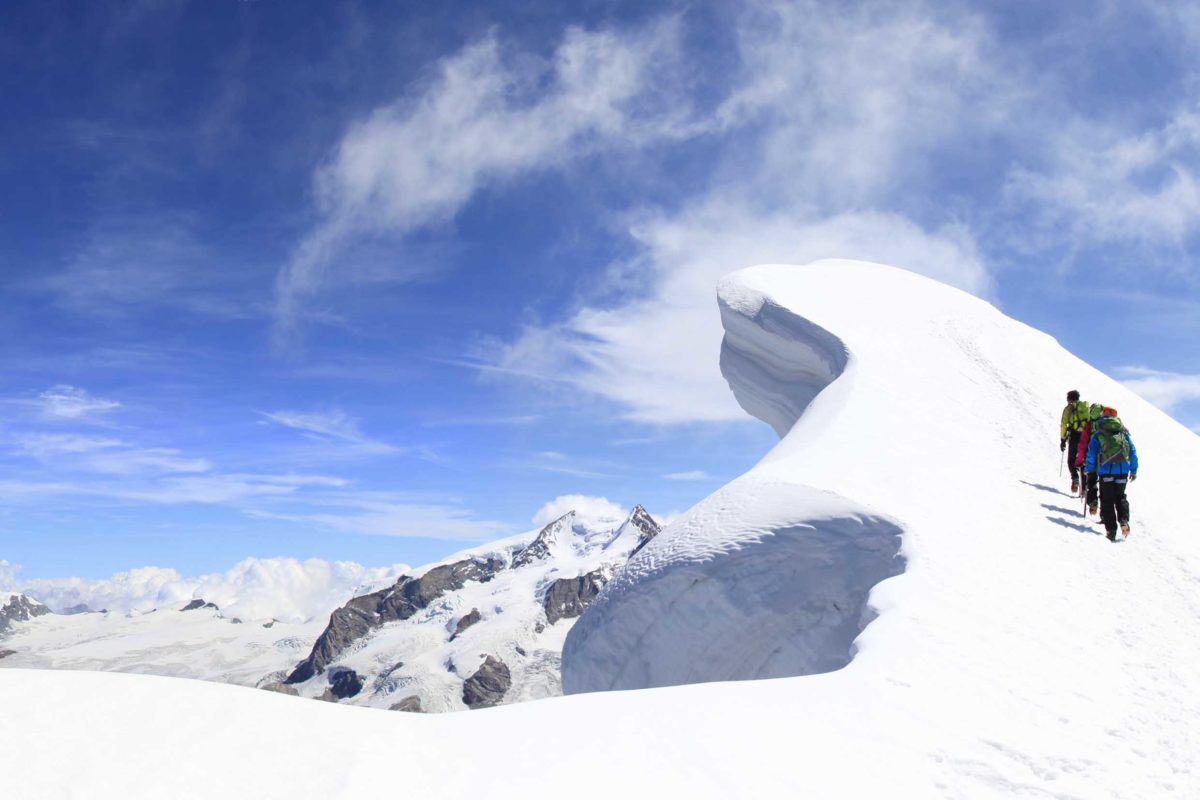The latest article in the UIAA Summer Skills series focuses on spacing between climbers. Characteristics of the terrain, the conditions for progression and the experience of the members of the party will determine how they rope up.
Wide spacing
Advantages
-
- Allows use of intermediate belay points.
- Allows climbers to cross dangers separately (crevasses, cornices…).
Disadvantages
-
- Average reactivity in case of a fall.
- Communication and mutual attention of the team members is delicate.
Close spacing
Advantages
-
- This technique is often used for moving quickly over easy terrain.
- Fast reaction in case of a slip: minimal rope stretch.
- Hand coils allow the distance to be varied according to terrain.
Disadvantages
-
- Without intermediate belay points, there must be no falls.
- It is reserved for expert leaders, capable of anticipating and controlling any loss of balance.
- Though the technique may be commonly used, it is important to remember
- Not for use on glaciers.
- Tie off the coils.
Previous extracts from the UIAA Alpine Summer Skills Guide can be found on our dedicated Skills page.
To purchase the guide click here.
About the UIAA Alpine Skills Summer Guide
The UIAA Alpine Skills Summer guide was first published in 2015. Produced in collaboration with the Petzl Foundation, the guide and has been well received worldwide and is currently available in five languages. To mark the launch of a digital version of the publication, the UIAA is running a series of articles from the guide designed to help hikers, climbers and mountaineers develop their skills and knowledge of the mountain environment.
The guide was developed specifically as a reference document for trip leaders and instructors of club and federations within the UIAA – an aide memoire for climbers and mountaineers who attend training courses delivered by instructors and guides who have gained qualifications accredited by the UIAA. Now open to the wider climbing and mountaineering world, the handbook’s four modules focus primarily on summer activities. However, a specific winter guide is currently in production.




